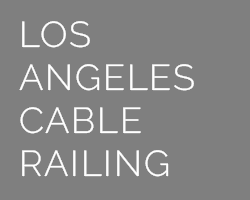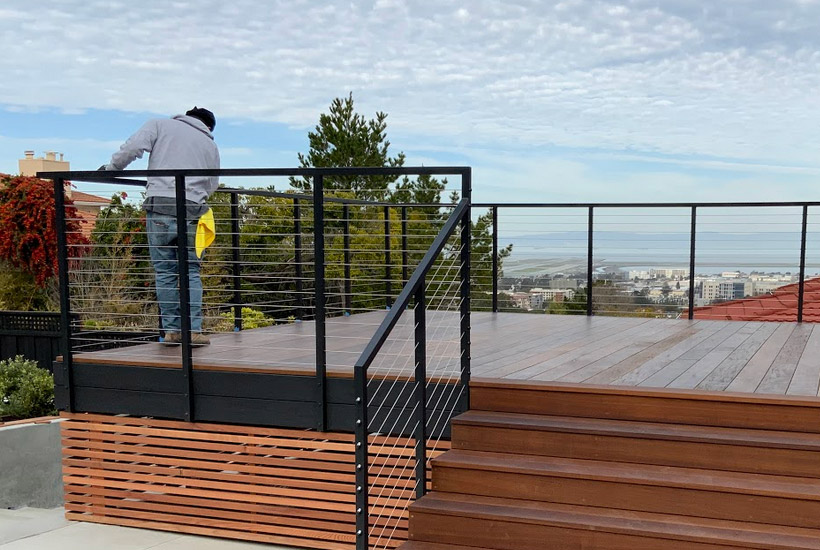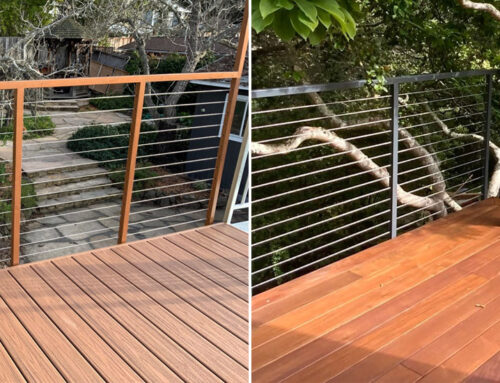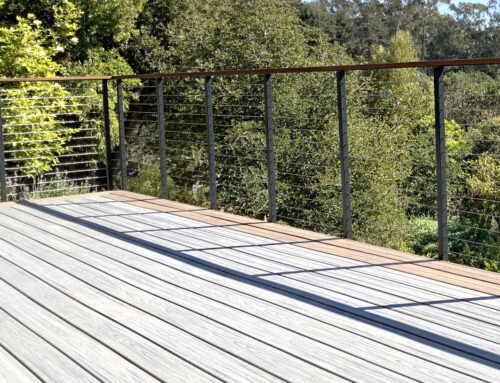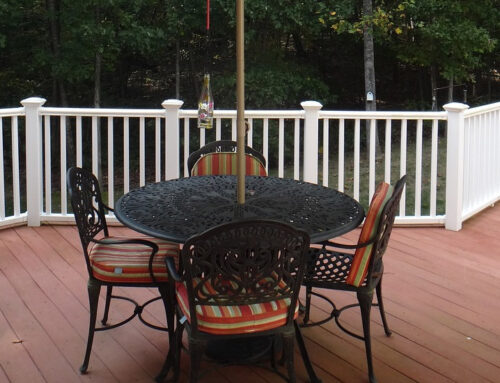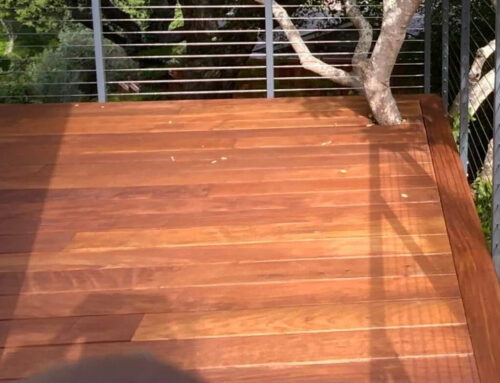Proper planning makes the difference in every project, including installing your cable railing system. We will sit down with you and assess your needs, whether you’re a home or business, for your deck railing. We create exceptionally well-designed cable railing systems for even the most complicated decks. How do we do it? After we assess your needs, we’ll create a seamless design with this step-by-step process.
1. Steel or Stainless Steel?
Together, we need to decide which materials you need for your cable railing system. The two main options we offer for railings are steel and stainless steel. Both are highly reliable materials that are suited to most decks. Stainless steel is more expensive, so when would you want to choose it over steel? A few things to consider:
- Additional strength: Stainless steel provides additional strength and durability over steel railings. It is important for decks which might have many people on them.
- Thinner cables: As stainless steel is stronger, the cables in these systems can be thinner. That means a less obstructed view.
- Environmental challenges: Where your railing might be exposed to salt spray, very high humidity, or other environmental challenges, stainless steel is often a wiser choice.
We’ll walk you through your options and help you make the best decision.
2. Stable Design
Once we know what kind of railing and what kind of cable we will be installing on your property, we can get down to the brass tacks, that is, the specifics of the design. That includes the spacing and placement of the posts, the hardware we’re using to install the railing, and where we’re connecting the railing to the deck all matter.
Of course, we’re familiar with the building code requirements for your railing, including the different requirements for residential vs commercial decks. Our railings always meet building code standards and, often, we exceed them, creating a stronger or safer railing.
Building code requirements include:
- Height: Standard railing height for residential is 36 inches and 42 inches for commercial railings.
- Cable spacing: Cables must be close enough that a ball with a 4-inch diameter cannot pass through them.
While there are no specific building code requirements for the spacing of the posts, we always choose a design that will be more than ample to support your railing and whatever is on it. Depending on the design, we might choose a four-foot distance between the posts. The size of the posts themselves also matters but, when working with metal, they can be quite thin and still provide exceptional strength.
3. Stylistic Choices
Of course, the look and feel of your cable railing system is as important as its sound design. We can make different stylistic choices to make your railing look great with any kind of deck and any kind of outdoor ambiance. That can include adding wooden elements, including top rails, to make your railing more cohesive with a wooden deck.
Do you have questions about the design of your cable railing system? Reach out to us today. Our team services Long Beach, Manhattan Beach, and the greater Los Angeles area, so help is never far away.
